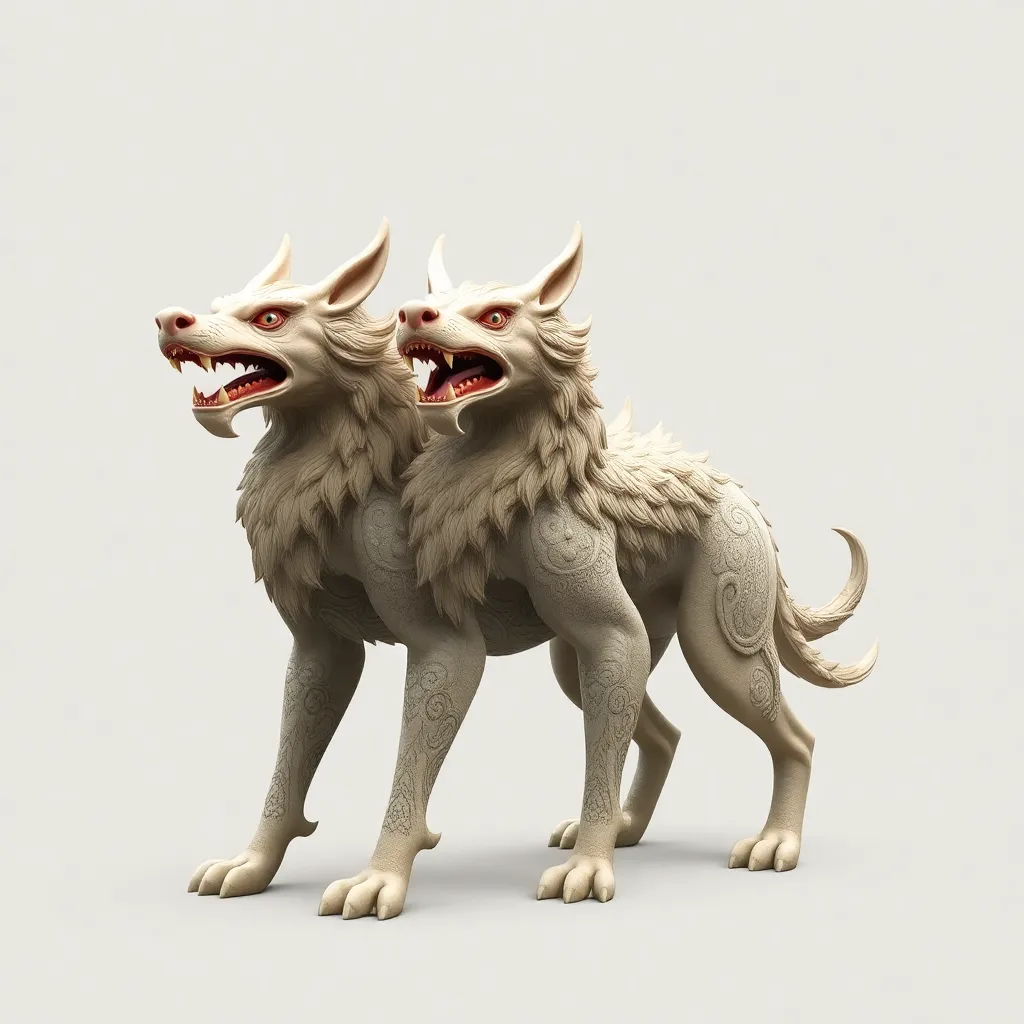The Three-Headed Hound in East Asian Mythology: Discovering the Cross-Cultural Influences on Cerberus
I. Introduction
Cerberus, the fearsome three-headed dog of Greek mythology, stands guard at the gates of the Underworld, preventing the dead from escaping and the living from entering. This iconic creature embodies the themes of guardianship and the transition between life and death, making it a potent symbol in ancient Greek culture.
Interestingly, the concept of three-headed hounds is not limited to Greek mythos. In various East Asian mythologies, similar creatures serve as guardians, reflecting a shared cultural motif that transcends geographic boundaries. This article aims to explore the parallels and distinctions between Cerberus and three-headed hounds in East Asian mythology, thereby shedding light on the cross-cultural influences that shape these fascinating mythological figures.
II. The Myth of Cerberus: Origins and Symbolism
Cerberus is traditionally depicted as a monstrous dog with three heads, a serpent’s tail, and a mane of snakes. Its primary role in Greek mythology is to guard the entrance to Hades, the realm of the dead. The creature is often associated with various myths, including those of Heracles, who was tasked with capturing Cerberus as one of his twelve labors.
The symbolism of Cerberus extends beyond its physical appearance. It represents the boundaries between life and death, as well as the fear of the unknown that lies beyond. In ancient Greek society, Cerberus served as a reminder of the inevitability of death and the importance of respecting the afterlife.
The cultural significance of Cerberus is evident in its appearances in art, literature, and folklore, where it often symbolizes protection, fear, and the duality of life and death.
III. The Three-Headed Hound in East Asian Mythology
In East Asian cultures, the motif of the three-headed hound appears in various forms, often embodying similar themes of guardianship and the afterlife.
Key mythological examples include:
- Fenghuang in Chinese mythology: Often referred to as the “Chinese Phoenix,” the Fenghuang represents virtue and grace. Though not a direct equivalent to Cerberus, its role in safeguarding harmony and balance in the cosmos echoes the protective nature of three-headed hounds.
- The Shisa in Okinawan culture: These lion-dog statues, often placed at entrances, are believed to ward off evil spirits. While typically depicted as single-headed, some interpretations and variations portray them with multiple heads, symbolizing their dual role as guardians of homes and protectors against misfortune.
Common themes among these figures include protection, guardianship, and the safeguarding of sacred spaces, reflecting a universal understanding of the need for defense against malevolent forces.
IV. Cross-Cultural Connections: Comparative Analysis
A comparative analysis of three-headed hounds across cultures reveals both striking similarities and notable differences in their roles and symbolism.
Similarities include:
- Guardianship: Both Cerberus and its East Asian counterparts serve as protectors, often associated with entrances to significant realms such as the afterlife.
- Symbol of Fear: The fearsome nature of these creatures symbolizes the unknown aspects of death and the afterlife.
- Mythical Heritage: Each figure is steeped in rich narratives that reflect the values and beliefs of their respective cultures.
Differences in symbolism and representation include:
- Motivations: While Cerberus is primarily a guardian of the dead, East Asian hounds may also serve to protect the living from harm and misfortune.
- Cultural Context: The portrayal of these creatures is influenced by local beliefs, such as ancestor worship in East Asia, which may not have a parallel in Greek mythology.
Furthermore, cultural exchange and migration have played a significant role in shaping these narratives, allowing for the blending of ideas and symbols across different societies.
V. Scholarly Interpretations and Theories
Scholars have long debated the origins and meanings of mythological parallels between different cultures. Some suggest that the similarities between Cerberus and East Asian three-headed hounds arise from cultural diffusion, where ideas and symbols are shared and adapted through trade and interaction.
Conversely, others argue for independent development, positing that these motifs arose independently in response to similar societal needs and fears related to death and the afterlife.
Case studies of specific texts or artifacts further illustrate these theories, showcasing how ancient cultures grappled with existential questions through their mythologies.
VI. The Role of the Three-Headed Hound in Modern Culture
The legacy of Cerberus and its East Asian counterparts endures in contemporary media, influencing literature, films, and art.
In modern storytelling, Cerberus appears in various forms, from video games to movies, often depicted as both a fearsome opponent and a tragic guardian. Similarly, the Shisa and Fenghuang have found their way into popular culture, symbolizing protection and good fortune.
The enduring nature of these mythological figures reflects humanity’s ongoing fascination with themes of guardianship, the afterlife, and the complexities of existence.
VII. Thematic Exploration: Guardianship and the Afterlife
The thematic significance of guardianship in mythology cannot be overstated. Both Cerberus and three-headed hounds in East Asian cultures symbolize the protection of important thresholds—whether they be the gates of the underworld or the entrances of homes.
In the context of the afterlife, these creatures embody the fears and hopes associated with death, acting as both protectors and reminders of mortality. They reflect cultural beliefs about the importance of safeguarding one’s spirit and the sanctity of the afterlife.
Ultimately, these narratives serve as profound reflections on human beliefs and values, inviting contemplation on our mortality and the legacies we leave behind.
VIII. Conclusion
In summary, the exploration of Cerberus and three-headed hounds in East Asian mythology reveals a rich tapestry of shared themes and distinct cultural expressions. The importance of recognizing these cross-cultural influences lies in our understanding of human beliefs and values throughout history.
The three-headed hound, whether in ancient Greece or East Asia, continues to resonate in contemporary society, reminding us of our shared fears, aspirations, and the eternal quest for understanding the mysteries of life and death.




